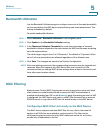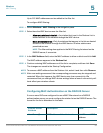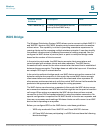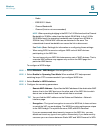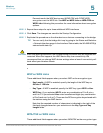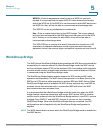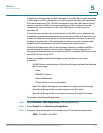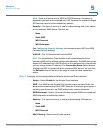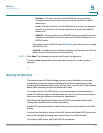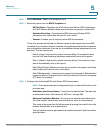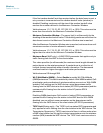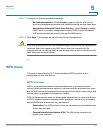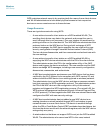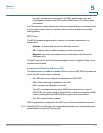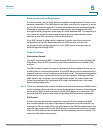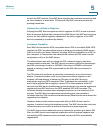
Wireless
Quality of Service
Cisco Small Business WAP121 and WAP321 Wireless-N Access Point with PoE 96
5
- Disabled—The set of clients in the APs BSS that can access the
upstream network is not restricted to the clients specified in a MAC
address list.
- Local—The set of clients in the APs BSS that can access the upstream
network is restricted to the clients specified in a locally defined MAC
address list.
- RADIUS—The set of clients in the APs BSS that can access the upstream
network is restricted to the clients specified in a MAC address list on a
RADIUS server.
If you select Local or RADIUS, see MAC Filtering for instructions on creating
the MAC filter list.
• VLAN ID—Configure the Access Point Interface with the same VLAN ID as
advertised on the Infrastructure Client Interface.
STEP 5 Click Save. The changes are saved to the Startup Configuration.
The associated downstream clients now have connectivity to the upstream
network.
Quality of Service
The quality of service (QoS) settings provide you with the ability to configure
transmission queues for optimized throughput and better performance when
handling differentiated wireless traffic, such as Voice-over-IP (VoIP), other types of
audio, video, streaming media, and traditional IP data.
To configure QoS on the WAP device, you set parameters on the transmission
queues for different types of wireless traffic and specify minimum and maximum
wait times (through contention windows) for transmission.
WAP Enhanced Distributed Channel Access (EDCA) parameters affect traffic
flowing from the WAP device to the client station.
Station EDCA parameters affect traffic flowing from the client station to the WAP
device.
In normal use, the default values for the WAP device and station EDCA should not
need to be changed. Changing these values affects the QoS provided.
To configure WAP device and Station EDCA parameters:



